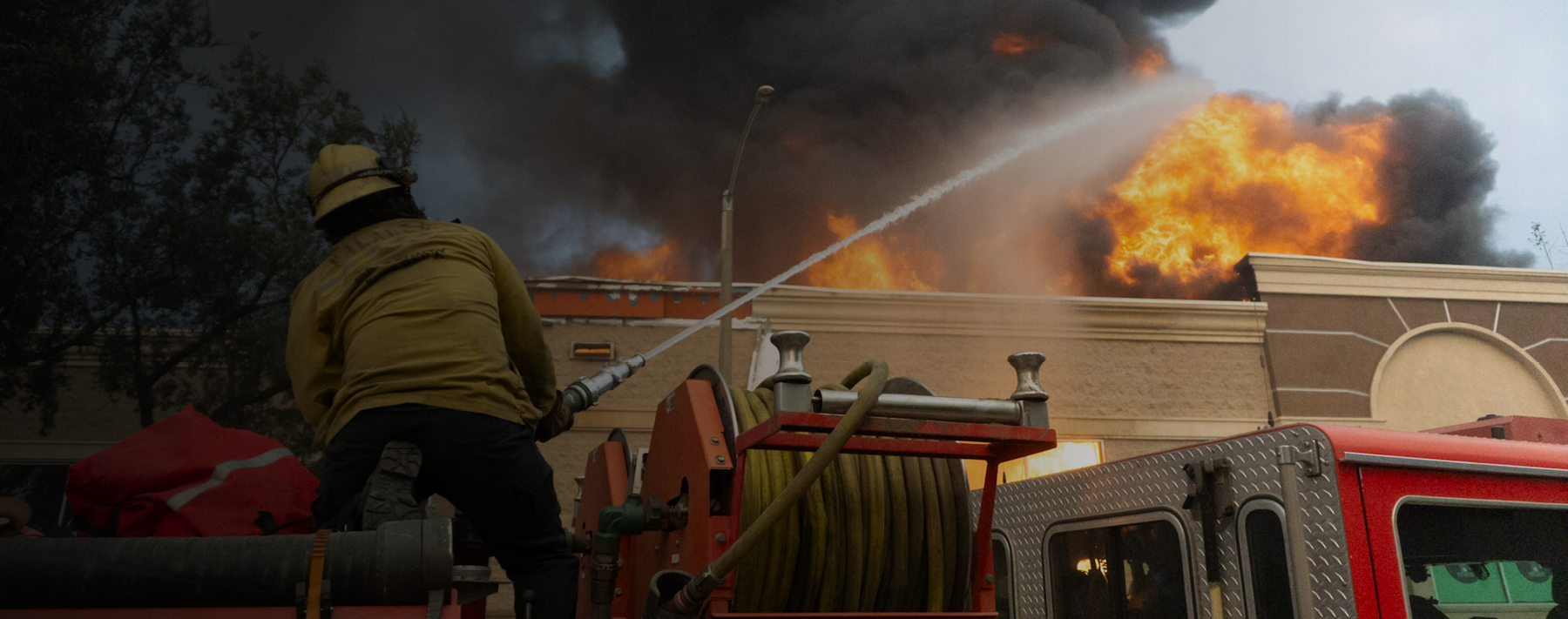The Lexipol webinar titled “Violence Against Fire and EMS: Understanding and Mitigating Risks” features a critical discussion moderated by Deputy Fire Chief Billy Goldfeder, with insights from Fire Chief Anthony Marrone, Deputy Fire Chief James E. McClelland Jr., and Fire Chief Chuck Ryan. With their combined experience of over 140 years, these leaders examine the escalating violence faced by fire and EMS personnel and offer actionable strategies to reduce risks. The session provides critical insights, drawing from real-world scenarios to help emergency professionals enhance their safety and preparedness in increasingly volatile environments. Below are a few key takeaways from this insightful session.
The Escalating Threat of Violence in Emergency Services
In the past few years, there has been a significant uptick in violence against fire and EMS personnel. This concerning trend mirrors the broader pattern of societal unrest and widespread frustration that has plagued public safety for many years. Fire Chief Anthony Marrone highlights how the Los Angeles County Fire Department has long been aware of this issue, with historical events such as the 1992 L.A. riots and the 2020 protests leading to the implementation of body armor and civil disturbance policies.
Chief Marrone’s emphasis on preparedness signals a broader shift within the fire service, highlighting the need to adapt to changing threats. All four presenters underscore the critical need for robust policies and training to protect personnel.
Real-World Case Studies: Lessons Learned and Applied
Throughout the discussion, presenters analyzed case studies to provide invaluable insights into the real-world challenges faced by fire and EMS personnel. One case involved a 2016 shooting in Prince George’s County, Maryland, where fire and EMS responders were ambushed during a routine welfare check. John Ulmschneider, a veteran firefighter local to the area, was killed in that incident. This tragic event prompted a critical reevaluation of how such calls are handled and led to significant policy changes within the department.
Deputy Fire Chief McClelland explained how the incident led his department to adopt a stricter entry policy. The new protocol includes a mandatory 360-degree assessment of a property before entry and requires local law enforcement presence for any forced entry. Such updates have played a pivotal role in mitigating risks for public safety personnel. For his part, McClelland emphasizes the value of continually evolving policies to reflect real-world dangers. Additionally, his department’s collaboration with Prince George’s County Police deepened the two agencies’ relationship, benefiting both by recognizing the need for joint responses and ensuring streamlined communication from dispatch to appropriate resources.
The psychological impacts of such incidents also heavily affect emergency personnel. Chief McClelland shared how the 2016 shooting had a profound effect on the mental health of his department personnel, leading to the implementation of enhanced mental health support services. This case study opens the discussion for the need for and importance of early intervention and the creation of a supportive environment within emergency departments. Providing ongoing mental health resources, such as peer support programs and counseling, ensures personnel have the tools to manage trauma and maintain resilience. Departments must recognize that long-term psychological care is as crucial as physical safety measures,.
Mitigating Violence: The Role of Policies and Training
A shared opinion between the leaders was the critical role that well-crafted policies and ongoing training play in mitigating the risks of violence against fire and EMS personnel. Fire Chief Ryan shares insights from the Tucson Fire Department’s response to a violent incident in 2021, where an arson fire was used as a cover for multiple shootings. The department’s preparedness, including the use of ballistic gear and close coordination with law enforcement, was pivotal in managing the situation effectively.
“Training is not a one-time event but a continuous process that must evolve alongside the changing landscape of emergency services,” says Ryan. Situational awareness, incident command, and de-escalation techniques are essential components of this training. All these factors can potentially help reduce violence against fire and EMS, making emergency response safer for everyone involved.
This proactive approach to training and policy development is crucial for creating a culture of safety within emergency services. Departments should regularly review and update their policies and training programs to reflect new threats and challenges. By doing so, fire and EMS personnel can be better prepared to handle violent situations and protect themselves and the communities they serve.
Addressing Mental Health: Supporting Our First Responders
The psychological toll caused by violence against fire and EMS personnel cannot be overstated. Agencies need to provide comprehensive mental health support to those affected by such incidents. As Fire Chief Marrone emphasized, “We’re actively working to eliminate the stigma surrounding mental health in our department and encouraging personnel to seek help when needed.”
Mental health is not just about reacting to incidents but also involves creating an environment where first responders feel supported and empowered to prioritize their own well-being.
This focus on mental health is a critical aspect of mitigating the long-term effects of violence against fire and EMS personnel. Departments must prioritize mental health as part of their overall safety strategy, ensuring members of their teams have access to the resources they need to cope with the psychological impact of their work. By fostering a culture that values mental health, departments can help first responders build resilience and maintain their ability to perform their duties effectively.
A Call to Action for the Future
The experiences and insights shared by Chief Marrone, Deputy Chief McClelland, and Chief Ryan highlight the importance of a comprehensive approach to address violence against fire and EMS. This includes robust policies, continuous training, strong collaboration with law enforcement and a commitment to mental health support.
As emergency services evolve, departments must remain vigilant and proactive in addressing the risks of violence. By learning from past incidents and implementing best practices, fire and EMS personnel can better protect themselves and continue to serve their communities with confidence and dedication.



